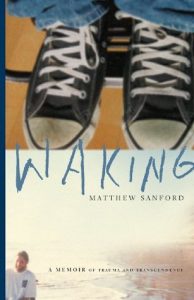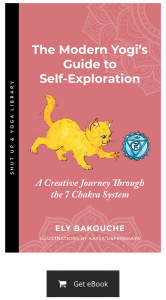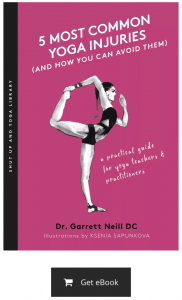JOIN OUR DISCUSSION CALL ON JUNE 28 AT 8 PM EST, AS WE DISCUSS MATTHEW’S BOOK TOGETHER!
In an effort to expand my perspective on accessibility in yoga, I’d been searching for a book that would help me become more skilled at teaching students with a wide range of abilities.
Waking: A Memoir of Trauma and Transcendence, by Matthew Sanford, had been on my reading list for a long time. I figured someone like Sanford, with personal experience learning yoga, and then teaching it, as a paraplegic would be the best person to learn from on the accessibility front. What I learned from reading Waking helped me build a new skill set—but it wasn’t the one I was originally looking for.
You will not find specific strategies for teaching more accessible yoga in Waking. You will, however, build a more nuanced understanding of the human experience that is far more helpful than a play-by-play breakdown cueing a Warrior 2 for a person who uses a wheelchair.
Waking is tough to read and I mean that in the best possible way. This is one of those books that makes you feel uncomfortable because it makes you feel. To me, that is the hallmark of good writing and storytelling.
Sanford starts the book recounting his experience of becoming paralyzed and I felt deeply for his loss of freedom, childhood, and innocence. I felt grief for his loss of family, for his loss of a “normal” life. At times I had to put the book down because it hurt too much to keep reading. As a mother of a young son with my second child on the way, I couldn’t fathom having to watch my child go through the pain Sanford went through.
Reading this book became my yoga practice as I noticed my own tendencies to push away and ignore the discomfort. Waking helps you become more aware of your own uneasiness around trauma, regardless of your personal history with it. Building this awareness, in my opinion, makes you a more compassionate human being and a more skilled yoga teacher.

This book also helped me acknowledge my misconceptions around disability. It struck me as surprising, for example, how Sanford approached his recovery by seeking to build a “normal” life. He documents his pursuit of external approval, popularity in school, leadership positions, girlfriends, degrees, and career choices. I felt sad and exhausted just reading about these experiences as it highlighted how detrimental societal norms can be for anyone, but especially someone who does not meet the arbitrarily designated norm. It felt cruel that society judges a person with different abilities as less capable or deserving of the same roles as someone with what is considered “normal” abilities.
This disconnect mirrors Sanford’s own living experience of having the full mental capabilities to function highly in society without the physical abilities to express those motivations in ways many people can. Reading this book inspired me to more critically assess my own relationship with “normal” and more proactively expand my community to include people of all abilities. Everyone, regardless of ability, has something to teach us.
What I loved about Waking was Sanford’s ability to show the reader how he integrated yoga philosophy into his life. Though it’s human nature to seek answers so that we can maintain a sense of control, Sanford argues they’re not necessary and sometimes not even very useful. He spends most of the book talking about his own journey with searching for and letting go of the need to have answers.
Sanford didn’t give me a concrete answer to the question “How do I teach someone yoga who can’t move their legs?” Instead, he provided an opportunity for me to learn about myself and find the answer along the way. By reading Sanford’s experience of his trauma, I was able to better understand my own life experiences. This understanding helped build my capacity to show up as a yoga teacher for someone who has had different life experiences than me.
This reflective self-inquiry also brought me closer to understanding the nature of enlightenment.
In the book, Sanford writes, “The silence within my consciousness both separated me and connected me simultaneously.” Baked into the context of Sanford’s story and my own life experiences, I had a vivid moment of understanding this simple statement as enlightenment itself—integrating and unifying the separate and the connected and recognizing all of it as one.
In my quest to become a better yoga teacher for those who may not have the same abilities as me, I did take away some basic premises that generally apply well for all students. First, Sanford emphasizes the importance of structured teaching. According to Sanford, structure provided him with a feeling of safety that allowed him to let go and receive the benefits of the yoga practice as he was learning how to be in his body again. Second, Sanford promotes teaching students how to cultivate, engage with, and respond to silence.
According to Sanford:
“This silence that I perceive within my body came upon me abruptly through a spinal cord injury. For most people, however, the process is slower. It develops through aging. Over time, the body becomes slower to respond, more likely to sit at rest, more content to observe rather than act. But in each case, the fundamental healing question remains the same: What aspect of consciousness will traverse the increasing gap between mind and body?”
Regardless of how big or little you perceive that gap between mind and body to be within you, asking the basic question (straight out of the Vedas), “Who am I?” offers students an opportunity to witness silence.
Later on, Sanford says: “The splendor and subtlety of living is most apparent in the conscious presence of the silence.”
Learning how to become aware of, sit with, and integrate silence into our lives—no matter how or where we find it lurking—is one of the most profound skills yoga teachers can impart to their students.

Finally, Sanford reaffirms that all healing, all of life, is a process that unfolds gradually and slowly over time. There is no one a-ha or “this is it!” moment that demarcates the “end” of a period of learning or that ushers in the beginning of a new phase of life (as evidenced by Sanford’s first experience with alcohol at age 13 in a hospital bed with his mom). Just like the end of teacher training is only the beginning, where we look for rituals and rights of passage in daily life, there is only ever a continuity of living, working, and learning.
As a teacher, this reminds me that as much as students want a 3-step process to improve this or that, yoga and life don’t work like that. You can give people what they want, but you also need to be mindful of teaching people what they need. And, as Sanford aptly shows throughout the book, most of the time what people need is quite simple.
It turns out Sanford taught me a lot about teaching accessible yoga throughout this book, even though he never gives specific sequences or talks about contraindications for specific conditions. After reading Waking, I feel like a better yoga teacher. Not because I have great ideas about what postures I should teach someone with a disability but because I have a better understanding of the variability (and unity) of human experience from reading about Sanford’s life.
At the end of the day, yoga offers basic universal principles that apply to all of us regardless of ability. As Sanford writes: “The principles of yoga, its logic, hold for my body in the same way as for anyone else’s. Its outer expression just looks different.”

This review is part of our SU&Y Book Club hosted by Ashley Zuberi.
Edited by Jordan Reed
Book club illustration by Katya Uspenskaya
You can buy Waking: A Memoir of Trauma and Transcendence by Matthew Sanford here & review it on Goodreads.




